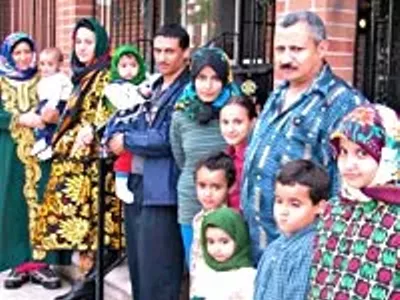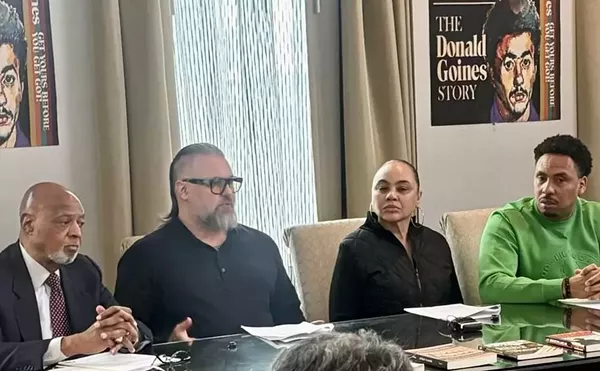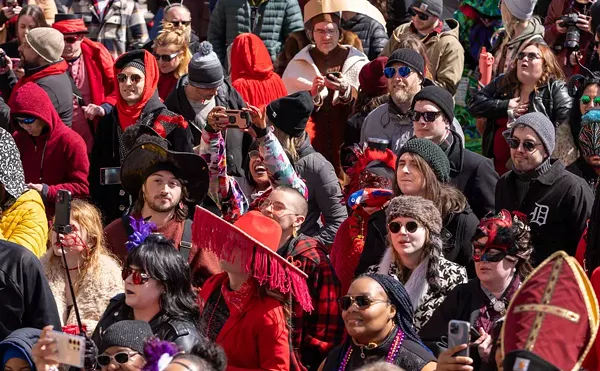The same Detroit funk that once oozed from John Lee Hooker still hangs thick in the ozone of Delray, one of Detroit’s most historically diverse neighborhoods. A community where Hooker once trod, Delray is located in the heart of Detroit’s industrial southwest side.
Originally settled by German immigrants, Delray is roughly bounded by River Rouge, Historic Fort Wayne, I-75 and Zug Island.
Jobs at the nearby factories have drawn people to the neighborhood. While Detroit is a notoriously segregated city, Delray’s residents have amazingly diverse backgrounds. The Hungarian, Irish, Gypsy, Polish, Arab, African-American, Armenian, Asian and Mexican communities are all represented here.
Yet neighbors share a small-town bond. Most residents identify themselves as being from Delray before they call themselves Detroiters.
Robin Pesko, a longtime resident, says, “I see some of these kids around here and I say to ’em, ‘I knew your parents, and probably your grandparents too!’”
The landscape of Delray looks as if Salvador Dali were its chief architect. Years of industrial encroachment creates a surreal stillness. There is no wildlife to speak of. The twisted towers of Zug Island loom ominously, hellish perversions of the skyline that confirm the handiwork of man. There are many vacant lots. The remaining buildings are old and many are in disrepair.
However, a number of homes have been meticulously maintained. This juxtaposition of the dilapidated and the immaculate adds to the mystique.
Delray is an active community. The heart of this activity is a Baptist bishop named Grover L. Wimbley, who is head of the Delray Neighborhood Foundation. His headquarters is on South Post Street, right across from another organization he oversees, The New Day Multi-Purpose Community Center.
The center, located in one of the most neglected areas of Delray, aims to restore the quality of life that once existed there. Its services are myriad: The neighborhood watch program, known as the Radio Citizens Patrol, was initiated by and operates within the center. This group is armed with a direct phone line to the 4th Precinct police station and patrols the neighborhood looking for illegal activity and blight.
Every Friday, the center hosts “Shop Till You Drop,” which offers free food, clothing and other essentials to the needy. Through an agreement with a contractor, the center provides employment to some people who come through its doors. The center provides a shuttle to and from the workplace for those without transportation.
Wimbley’s community center is also involved with the effort to restore a 100-year-old church, now occupied by the New Day Church of Deliverance at 507 S. Post St. The church has seen better days, but it is easy to imagine its previous and potential beauty. “We hope to one Sunday hear this bell tower ringing again,” says Anthony Dunn, a minister and associate of Wimbley’s.
A major obstacle to the renewal sought by the Community Center is the industrial zoning that’s prevalent in Delray. The neighborhood that was built up around the factories is now at risk of being swallowed by them.
Harriet McPhail, a long-term resident of Delray, remembers a time when the stretch of Jefferson that runs through Delray was filled with people and businesses, and rivaled any other part of Detroit for shopping and culture.
“We used to have theaters, large stores, and a whole variety of restaurants,” she says.
The industrial classification has made real estate so costly that many entrepreneurs and residents cannot afford their businesses and homes.
Once again the bishop has stepped in to help. Wimbley and his West Jefferson Industrial District Citizens Council have been lobbying and campaigning for new zoning ordinances that would preserve the residential area of Delray. He has applied for state and national grants to help in the purchasing and renovation of property near the community center.
Wimbley maintains a positive attitude. “Both air and water pollution levels have gone way down since the ’70s,” he notes.
Better livability is a stepping stone toward preservation of the residential areas within one of Detroit’s most interesting and definitive neighborhoods.
Return to the introduction of this special Metro Times Summerguide 2002 neighborhood profile. Adam Stanfel is an editorial intern at Metro Times. E-mail [email protected]






